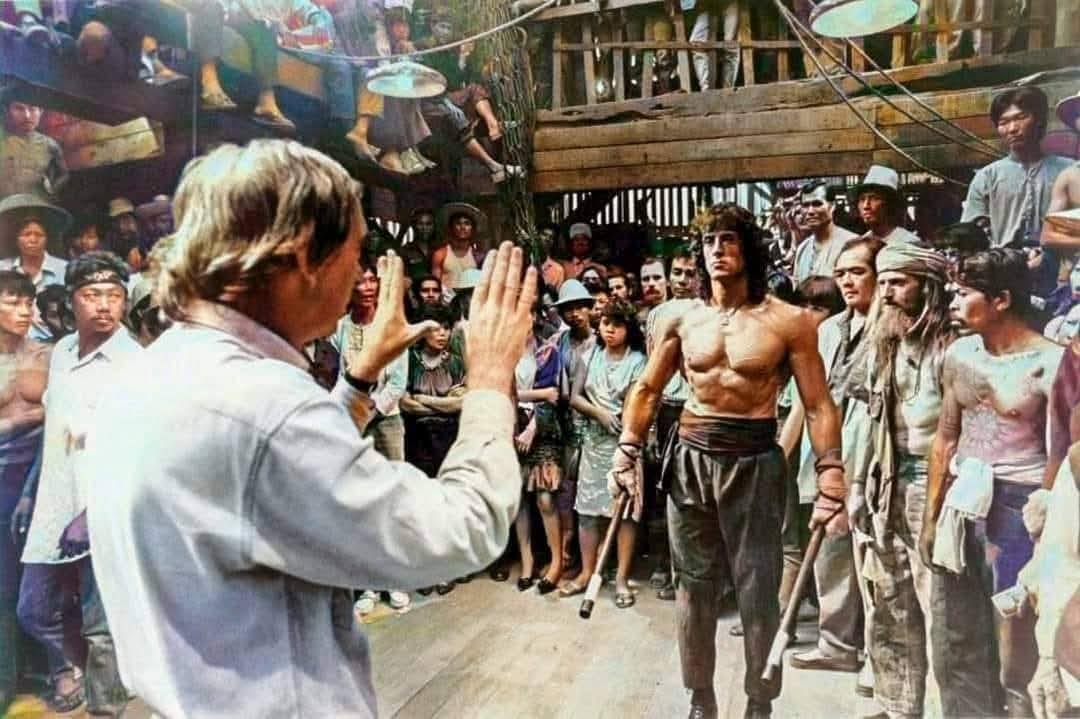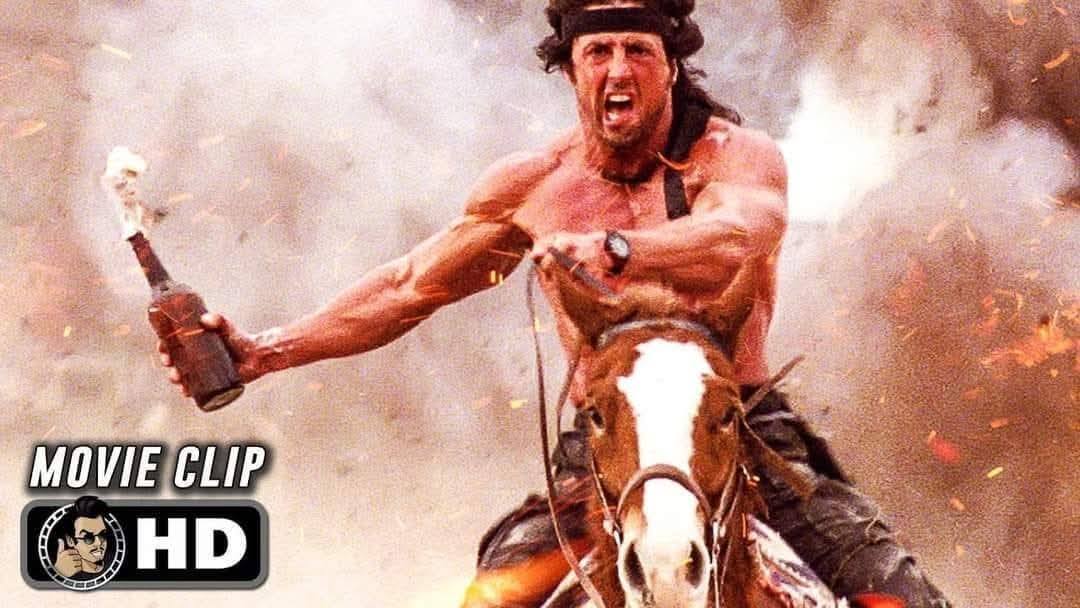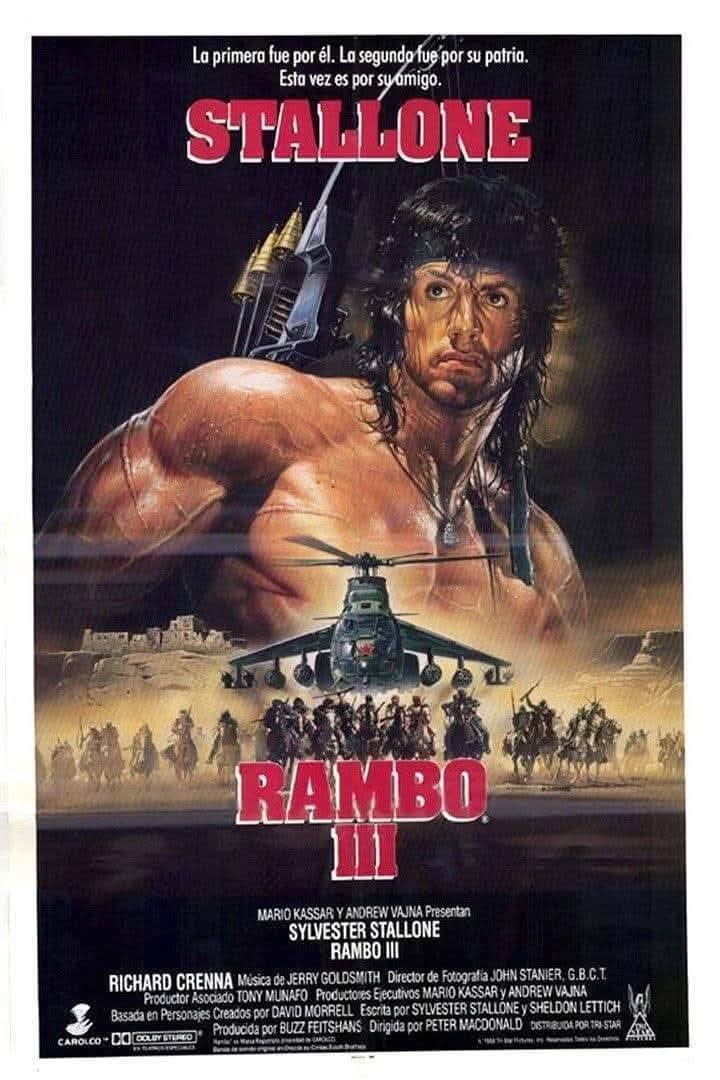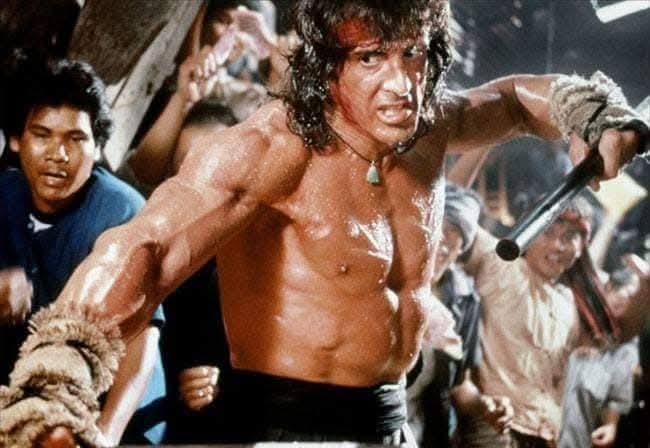Rambo III (1988)


The plot follows Rambo, now living quietly in a Thai monastery, as he’s recruited by Colonel Trautman (Richard Crenna) to aid Afghan mujahideen against Soviet forces. Initially refusing, Rambo springs into action when Trautman is captured by Colonel Zaysen (Marc de Jonge), a brutal Soviet commander. Armed with a bow, knives, and grit, Rambo teams with rebel leader Masoud (Spiros Focás) and a young fighter, Hamid, to infiltrate a Soviet fortress. The film climaxes in a frenetic battle involving tanks, helicopters, and Rambo’s one-man army tactics, rescuing Trautman and decimating the enemy. Dedicated to “the gallant people of Afghanistan,” it reflects Cold War tensions, though its simplistic portrayal of the conflict later drew scrutiny.
Stallone, also a co-writer, embodies Rambo’s mythic intensity, performing grueling stunts like scaling cliffs and enduring torture. The cast, including Crenna’s steadfast Trautman and Kurtwood Smith as a smarmy diplomat, supports the action-driven narrative. Shot in Thailand, Israel, and Arizona, the film’s desert vistas and massive explosions—coordinated by 100 stuntmen—create visceral spectacle. Jerry Goldsmith’s rousing score amplifies the adrenaline, though the script, revised from an earlier draft for Uncommon Valor, prioritizes action over depth. Historical inaccuracies, like exaggerated Soviet brutality and simplified mujahideen heroism, align with its propagandistic tone.

Critically, it scored a 39% on Rotten Tomatoes (36 reviews) and 36/100 on Metacritic (15 reviews), with Roger Ebert giving it 2/4 stars for “cartoon-style” excess, though Variety praised its “sustained action.” Fans on Amazon (4.6/5 from 5,200 reviews) and X laud its relentless pace and iconic moments, like Rambo cauterizing his own wound. Once listed in the Guinness Book as the most violent film (221 kills, 108 minutes of violence), it’s a time capsule of Reagan-era machismo. The original 2-hour cut, with more character moments, remains unreleased, but the theatrical version thrives on excess.

Shot with ambition, the production faced challenges: Stallone performed dangerous stunts, and crew injuries mounted during Thailand’s monsoon season. Its massive budget, ballooned by global locations and effects, made it a gamble for Carolco Pictures, yet its box-office haul ensured the franchise’s longevity. While less introspective than First Blood (1982) or Rambo: First Blood Part II (1985), it leans into myth-making, cementing Rambo as a cultural icon of Reagan-era machismo. Modern viewers may wince at its dated politics and ethnic stereotypes, but its visceral thrills endure.
Available on AMC+, Amazon Prime, and Lionsgate’s 4K Blu-ray, Rambo III is a time capsule of 1980s action excess—perfect for fans craving unfiltered chaos, less so for those seeking subtlety. It’s a film where tanks explode, heroes bleed, and victory is hard-won, proving Rambo’s legend as indestructible as ever.’











